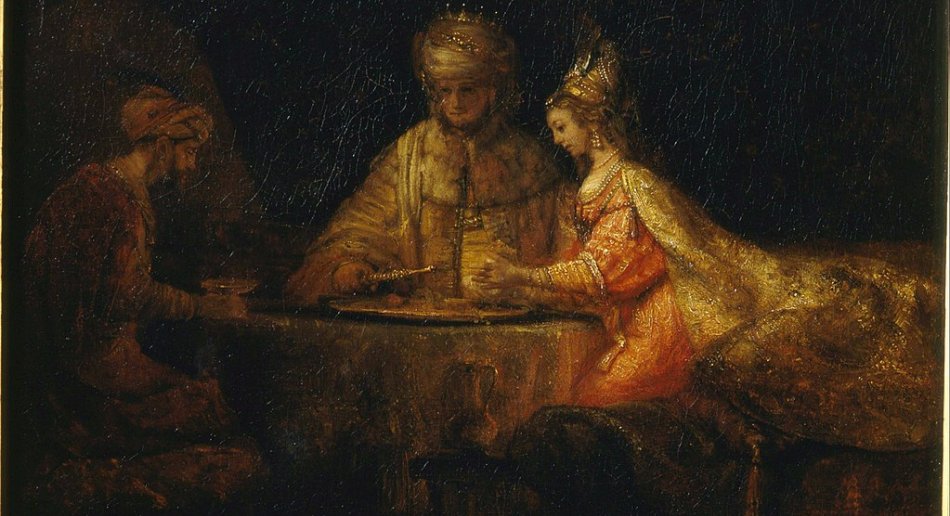
PERSIAS - Perception and Reception of Persia among Jews in Antiquity, from Achaemenid to Sassanian times
PERSIAS aims at stimulating multidisciplinary discussions on theoretical and methodological perspectives related to appropriations of conceptualizations, memories, and multifaceted imaginations of Persia.
PERSIAS addresses strategies of representing self and others by investigating images of Persia as they are applied in Jewish writings throughout antiquity.
The PERSIAS research group addresses strategies of representing self and others by examining images of Persia at various points of time and places among Jews throughout antiquity. Persian kings, queens, deities, and “Persia” and “Persians” populate the worlds of imagination of multiple ancient Jewish communities.
In the Hebrew Bible, for instance, Cyrus’ restoration of Yahweh’s temple in Jerusalem and the people of Judah after their exile in Babylon (587-538 BCE) is presented as a plan of Israel’s god. This representation of Cyrus illustrates a composite relationship between the Persian Empire and Jews living in the imperial border zone. By placing the Persian king under the authority of their own deity, the Jews create an image of the foreign king which is entangled with their own worldview.
Contact
For more information about the project, please contact the project leader/PI:
Each Jewish group imagined Persians differently depending on the social and cultural context in which each lived. All these images attest to the multivarious ways in which groups may imagine their world and themselves in the context of empire, minority status, as well as their strategies for living and thriving in various ancient imperial and multicultural societies (e.g., Hellenist Alexandria, Roman Judah, Sassanian Iran).
PERSIAS is informed by diversity studies and research on minority groups in today’s multi-ethnic and multi-cultural societies and contributes to these anthropological and cultural studies with its historical perspectives grounded on ancient cases of imperial experiences among minority groups.
Core Group
- Kristin Joachimsen (PI, MF Oslo)
- Laura Carlson Hasler (Indiana)
- Kristin De Troyer (Salzburg)
- Elisa Uusimäki (Aarhus)
- Julian Degen (Innsbruck)
- Jason Mokhtarian (Cornell)
- Domenico Agostini (Naples)
- Erik Kvindesland (Vienna)
Members
- Gard Granerød (MF Oslo)
- Solvår Ask Isene (MF Oslo)
- Kåre Berge (TF Oslo)
- Jason Silverman (Helsinki)
- Mika Pajunen (Helsinki)
- Petra Schmidtkunz (Berlin)
- Shervin Farridnejad (Hamburg)
- Louis Jonker (Stellenbosch)
- Collin Cornell (Fuller)
Advisory Board
- Ehud Ben Zvi (Alberta)
- Sylvie Honigman (Tel Aviv)
- Loren Stuckenbruck (Munich)
- Touraj Daryaee (Irvine)
- Josef Wiesehöfer (Kiel)
Activities
Workshops:
- MF Oslo, 20-21 October 2025: Diversity and Belonging II: Jewish and other groups from Roman up to Sasanian times through the lens of representations of Persia
- MF Oslo, 14-15 October 2024: Diversity and Belonging I: Religious minorities and religious diversity in the Teispid-Achaemenid Empire
- MF, Oslo, 10-11 October 2022: Perceptions and Receptions of Persia among Hellenistic and Sasanian Jews: Historical Considerations and Comparative Insights from Contemporary Cultural/Religious Minority Studies
- MF, Oslo, 2-4 February 2019: Perceptions and Receptions of Persia Among Hellenistic Judean
- Kings College London 29-30 August 2018: Perceptions and Receptions of Cyrus
Research Sessions at Meetings:
- European Association of Biblical Research (EABS) Research Unit 2020-2031: Perceptions and Receptions of Persia
- Session at EABS Meeting in Uppsala (hybrid, joint meeting with SBL): The perception of Persia by the different versions of the Book of Esther
- Session at EABS Meeting in Sofia (hybrid) 2024: Symbolic Spaces Associated with Paradise (Pardes)
- Session at EABS Meeting in Syracuce (hybrid) 2023: Ancient Jewish Memories of Achaemenid Persia
- Sessions at EABS Meeting in Toulouse (hybrid) 2022: Presences and Absences of Persian God(s), Kings, and Queens
- Digital session at EABS Meeting (Wuppertal) 2021: Perceptions and Receptions of Persia in the Hebrew Bible
Research Sessions at Society of Biblical Literature Annual Meeting:
- Joint session in Boston 2025 together with the program unit Literature and History of the Persian Period: Mobility: Migration in the Persian Period as depicted in texts
- Session in San Diego November 2024: Joint sessions in collaboration with the program units Literature and History of the Persian Period and Deuteronomistic History: Presences and Absences of Persia in the Deuteronomistic History
- Session in San Antonio November 2023: Joint session in collaboration with the program unit Deuterocanonical and Cognate Literature: Discussing Race and Ethnicity in Esther
- Session in Denver November 2019: Perception and Reception of Persia in Chronicles and Ezra-Nehemiah at the unit Chronicles-Ezra-Nehemiah
Publications
- Special Issue in Hebrew Bible and Ancient Israel: Presences and Absences of Persia in the Deuteronomistic History, ed. Kristin Joachimsen and Lous Jonker (forthcoming)
- Volume in the Brill Series Themes in Biblical Narrative entitled Symbolic Spaces Associated with Paradise (Pardes), ed. Kristin Joachimsen and Jason Silverman (forthcoming)
- Journal of Hebrew Scripture Special Issue 2026: Ancient Jewish Memories of Achaemenid Persia, ed. Kristin Joachimsen and Jason Mokhtarian
- Die Welt des Orients Special Issue 2025
- Religions Special Issue 2022. Constructions of Persian and Iranian Identity, Ethnicity, and Religion From Ancient Times to the Present, ed. K. Joachimsen and M. Hafnor Bøe
Synergies
- 2025/26: Kristin Joachimsen and Helge Bezold (eds.), Esther: Themes and Issues, Equinox
- 2024: Global Fellow at MF: Louis Jonker (Stellenbosch)
- 2023: Achaemenid Workshops II, Obergurgl, 3rd–9th July 2023: The Achaemenid Persian Empire and Imperial Transformations in the Ancient Near East (7th c. BC–2nd c. BC).
- 2023, 2024: Julian Degen (Trier), Erasmus+ staff mobility: teaching
- 2023: MF CASR Guest lecture: Jim Aitken (Cambridge)
- 2020- PhD project Solvår Ask Isene, Not “my shepherd”? The reception and representation of the Persian king Cyrus in OG Isaiah

